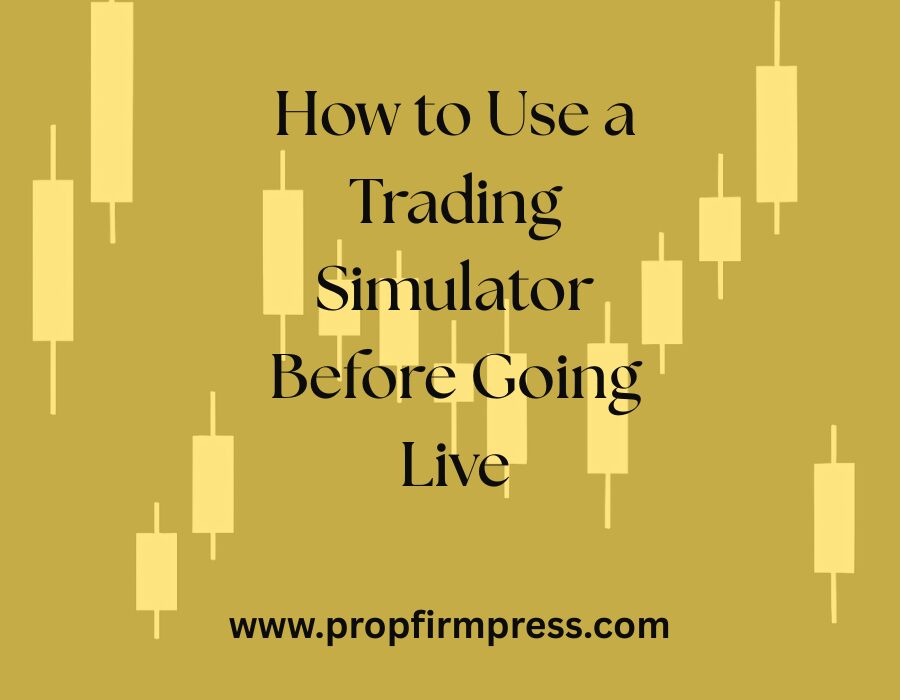Why a Trading Simulator Is Essential for Prop Firm Success
In the world of prop firm evaluations, where real money is on the line and strict rules determine whether you pass or fail, a trading simulator is more than just a practice tool—it’s a critical step in building consistency. Many traders rush into funded account challenges without first proving themselves in a simulated environment. This often leads to blown accounts, rule violations, and unnecessary resets. Using a simulator the right way can dramatically increase your odds of passing your first challenge and sustaining profitability.
What Is a Trading Simulator?
A trading simulator is a platform that mimics real market conditions without risking actual capital. It allows you to place trades using real-time or historical data, track performance metrics, and practice execution without financial consequence. Many platforms—including NinjaTrader, TradingView, and Tradovate—offer robust simulation features ideal for futures and forex traders preparing for prop firm evaluations.
Benefits of Using a Trading Simulator
- Risk-free testing: Experiment with strategies without losing money.
- Rule adaptation: Practice adhering to specific firm rules before going live.
- Emotional awareness: Recognize and manage psychological tendencies in a stress-free setting.
- Skill refinement: Build mechanical discipline in order placement and trade management.
Firms like Bulenox and Funded Futures Network provide detailed rule structures. Simulators allow you to test compliance before risking a challenge fee.
How to Set Up a Simulator Like a Real Prop Firm Account
To get the most out of your simulator, replicate the exact conditions of the prop firm evaluation you plan to take. Here’s how:
- Match account size: If you’re testing a $50K evaluation, set your sim account to $50K.
- Use the same instrument: Trade the same asset you plan to use in the evaluation (e.g., NQ, ES, or Gold).
- Apply identical rules: Limit your daily loss, overall drawdown, and position size to match the firm’s restrictions.
- Follow time constraints: Trade only during allowed market hours and practice for the same duration as the real challenge.
Simulate Real Emotions with Structured Sessions
While simulators eliminate the risk of losing real money, you can still simulate the emotional pressure by treating each sim session seriously. Set daily goals and consequences:
- Daily profit target: $300 or 1.5% of the account
- Daily loss limit: No more than 2% per day
- Max trades: Limit to 3–5 high-quality setups per day
- Accountability: Log each session and rate your discipline level
Consider trading on a timer. For example, commit to trading only during 9:30 AM–12:00 PM EST for a week and review performance afterward.
Track Your Sim Performance Like a Funded Trader
The more structured your simulator experience, the more meaningful your results will be. Use journaling tools like the Prop Firm Press Journal Sheets to log:
- Entry and exit details
- Strategy used
- Risk/reward ratio
- Outcome (win/loss and R-multiple)
- Mistake analysis
By doing this for 20–30 trades, you’ll begin to see which strategies work best, how your emotions influence performance, and where you need improvement before risking your challenge fee.
Key Metrics to Track in Sim Mode
- Win rate (%)
- Average R/R ratio
- Max drawdown
- Profit factor
- Consistency (number of profitable days in a row)
These metrics give you a complete view of whether you’re truly ready to move on to a live challenge.
When to Graduate from Simulator to Live Evaluation
You’re ready to begin a prop firm evaluation when you meet the following conditions:
- Consistently profitable over 2–3 weeks of sim trading
- Zero rule violations (drawdowns, daily limits, overtrading)
- Clear, repeatable strategy with defined risk parameters
- Strong emotional control during simulated losses
Only then should you consider registering for a challenge at firms like Prop Shop Traders or Lucid Trading.
How to Use a Simulator After Getting Funded
The value of a simulator doesn’t end once you’re funded. Many professionals continue using simulators for:
- Testing new strategies: Validate setups before using them in your funded account.
- Reviewing mistake patterns: Reenact losing trades to see what went wrong.
- Confidence rebuilding: If you hit a drawdown, sim trading can restore confidence without risk.
Common Mistakes to Avoid
- Overtrading in sim: Just because it’s risk-free doesn’t mean you should take random trades.
- Ignoring rules: Bad habits formed in simulation will follow you into live trading.
- Inconsistent journaling: Without a performance log, your simulator time is wasted.
Best Platforms for Sim Trading with Prop Rules
- Tradovate: Sim mode with replay feature and integrated funded partner programs
- NinjaTrader: Great for futures with high-fidelity tick data and custom strategy testing
- TradingView: Ideal for forex and multi-asset simulation with user-friendly interface
Each of these platforms can be used to prepare for specific firms by customizing drawdown thresholds and account parameters.
Final Word
If you’re serious about becoming a funded trader, don’t skip the simulator. It’s the bridge between strategy theory and real-world execution. Master it, and your odds of passing a prop firm evaluation rise dramatically. Skip it, and you may end up learning the hard way—by losing time, money, and momentum.
